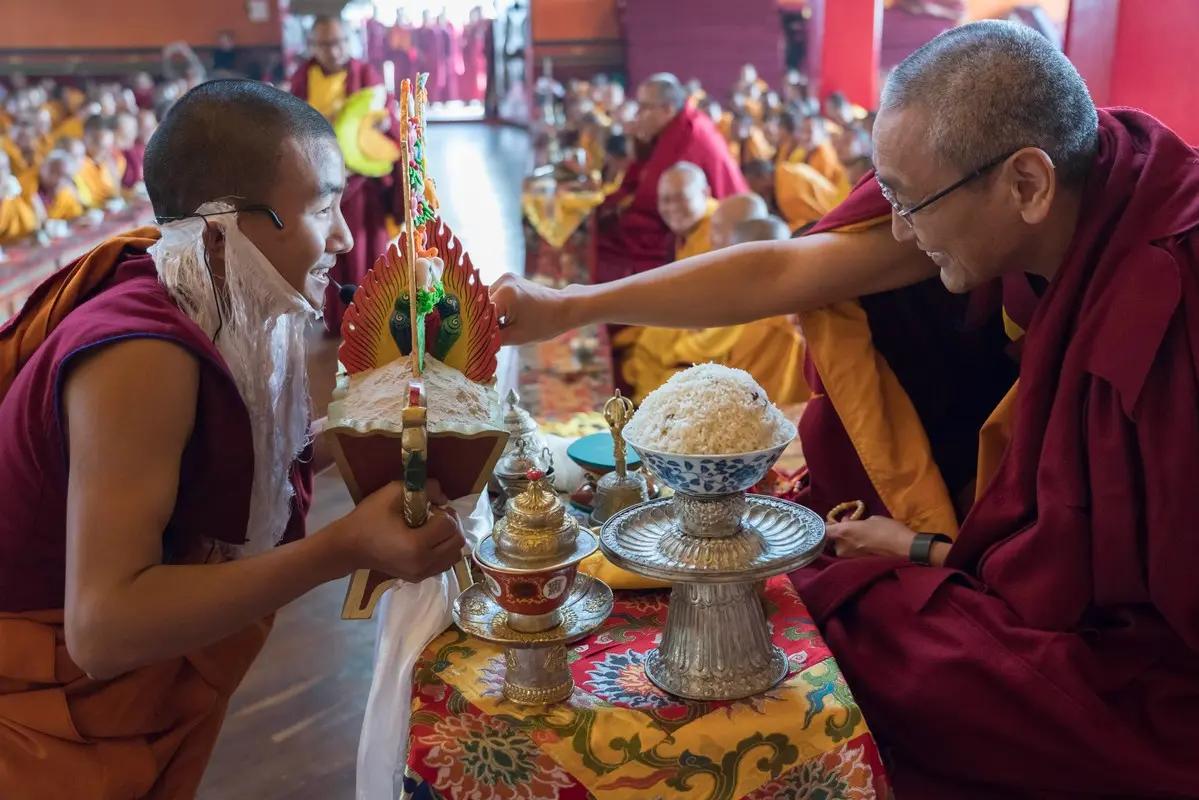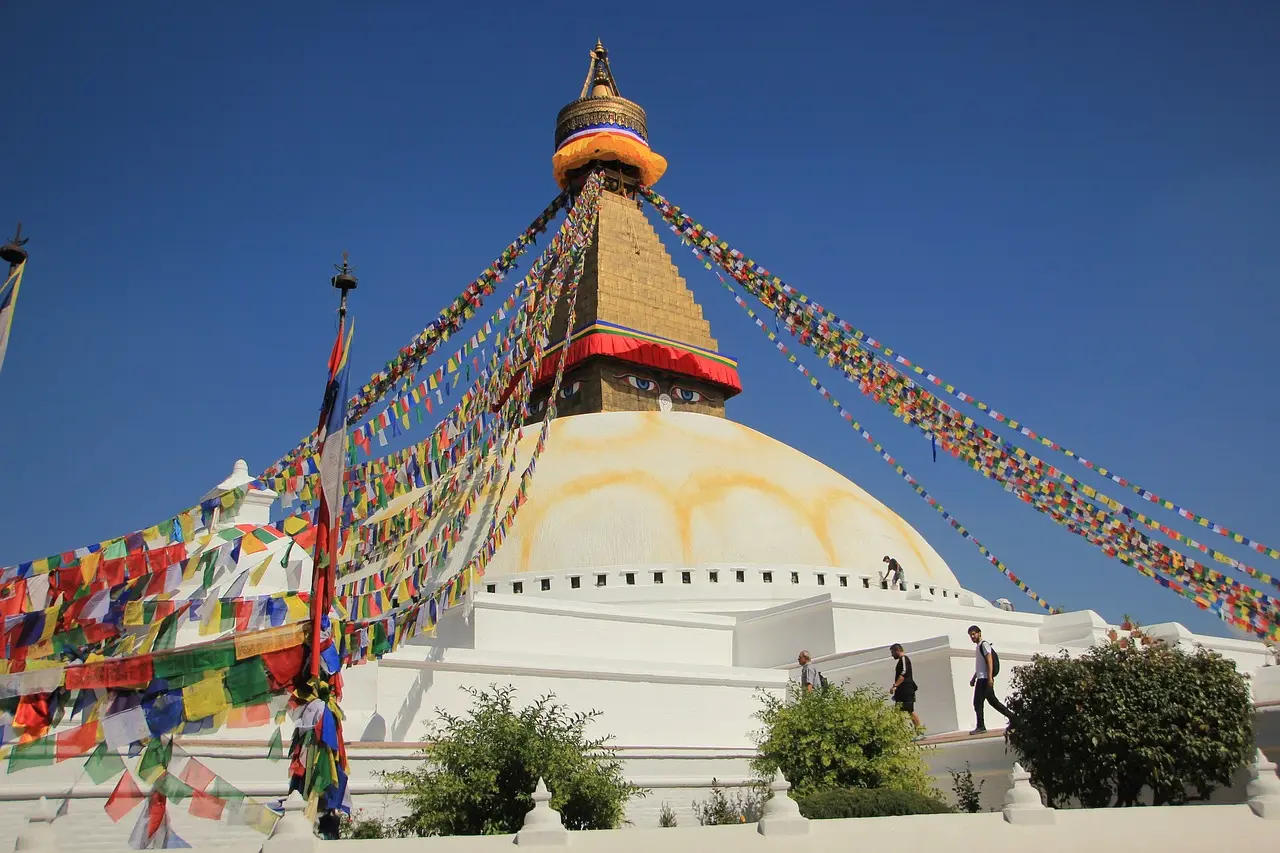Losar - Tibetan New Year

The Losar Rituals have many Buddhist elements, but Losar is primarily a secular event with its own flavor. The Tibetan Losar tradition contains elements and values that we share as human beings and, as in our own Western cultures, the New Year here means a fresh beginning. Non-Tibetans are always welcome at these celebrations. The specific rituals are not exclusive; everyone is invited to join the welcoming of a fresh start.
As Buddhists, Tibetans believe that if you want good circumstances, you yourself need to establish good conditions. Losar rituals are concerned with inspiring a creative attitude, to establish a basis for a good new year. On these first days of the year Tibetans engage in specific virtuous actions, and acts that are considered auspicious. Moreover, in the days that precede Losar, the last days of the old year, everyone in the community is concerned with pacifying and removing left-over negativity.
During this time, Tibetan monasteries and temples undertake specific rites to expel negative habits from the old year, so these will not be carried into the New Year. The lamas and monks will do a week of rituals, some of which culminate in the well-known lama dances. Moreover, in their homes, families prepare for the New Year by cleaning, and making new clothes.

On the first day of Losar, everyone gets up long before dawn, gathers in the temples with the monks and lamas, and participates in making good wishes for the New Year. Everyone is clean, and wears their new, (or at least freshly washed), clothes. And also, although this is not a central theme, it is a communal birthday: everyone is one year older. For the rest of the day most people will stay home, or visit the lamas they feel closely connected to. It is a day of relaxation and fun.
On the second day Tibetans visit each other and this too is a day of being with family and friends. Tibetans are very fond of the good life, and this is an occasion for good eating, drinking, telling stories, laughing, and playing dice, cards, or mahjong. The kids are in charge of fireworks, and during Losar one is regularly awakened to the present moment by powerful detonations.

On the third day, the Tibetans in Boudhanath gather at the Great Stupa for a large communal offering. Everyone will wear their new clothes, and the Stupa will be very crowded. First there will be the ceremony of lhasang – incense offering, which is essentially an offering of smoke from medicinal and fragrant herbs, directed at pleasing both the other- worldly beings such as non-humans, i.e.. gods, nagas, and spirits, as well as the sublime beings such as the buddhas and bodhisattvas. A portrait of His Holiness the Dalai Lama used to be carried around the Boudhanath Stupa. This initial section of the ceremony will be lead by lamas and monks. At the end everyone will take roasted barley flour, known as tsampa, and everyone joins in a common chant, and will then hurl the tsampa into space, also as an offering. This practice increases the prosperity, health and happiness of beings, and 'raises wind horse', a Tibetan concept that implies uplifting the human spirit and its outer manifestations of good circumstances. This concept also occurs in the Tibetan practice of hanging up prayer flags, which will be done in the days following Losar.
Keep in mind that during this ceremony there may be a lot of good-hearted tsampa throwing, and you may possibly emerge covered in tsampa flour! A useful greeting to all the friendly people you run into is 'Tashi deleg!'. Originally a New Year greeting, this is now the standard Tibetan 'hello'.
According to some traditions, this third day is the last day of Losar holidays, while other traditions have Losar lasting for up to two weeks.